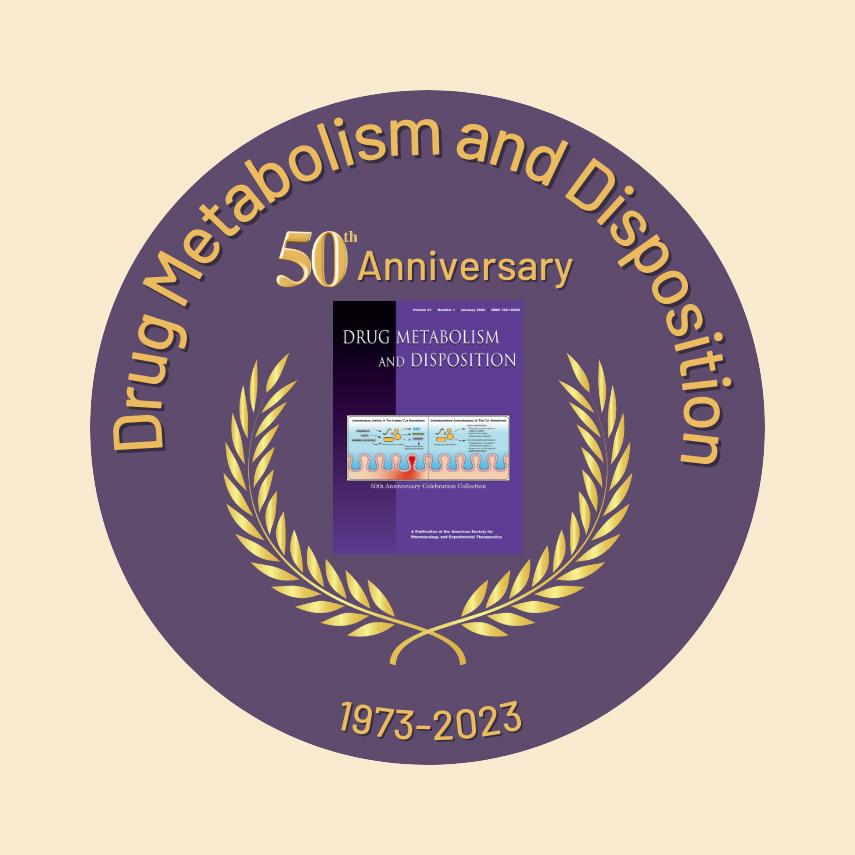Written by Simone Brixius-Anderko, PhD and Hannah Work
In the April 2024 issue, we highlighted the 50th anniversary of the journal Drug Metabolism and Disposition with a monthly overview of articles that celebrated the field of drug metabolism. In this second installment of the two-part series, we continue to highlight the work and accomplishments of esteemed researchers and laboratories that were published in the DMD journal in late 2023.
July
Characterization of Heterobifunctional Protein Degraders
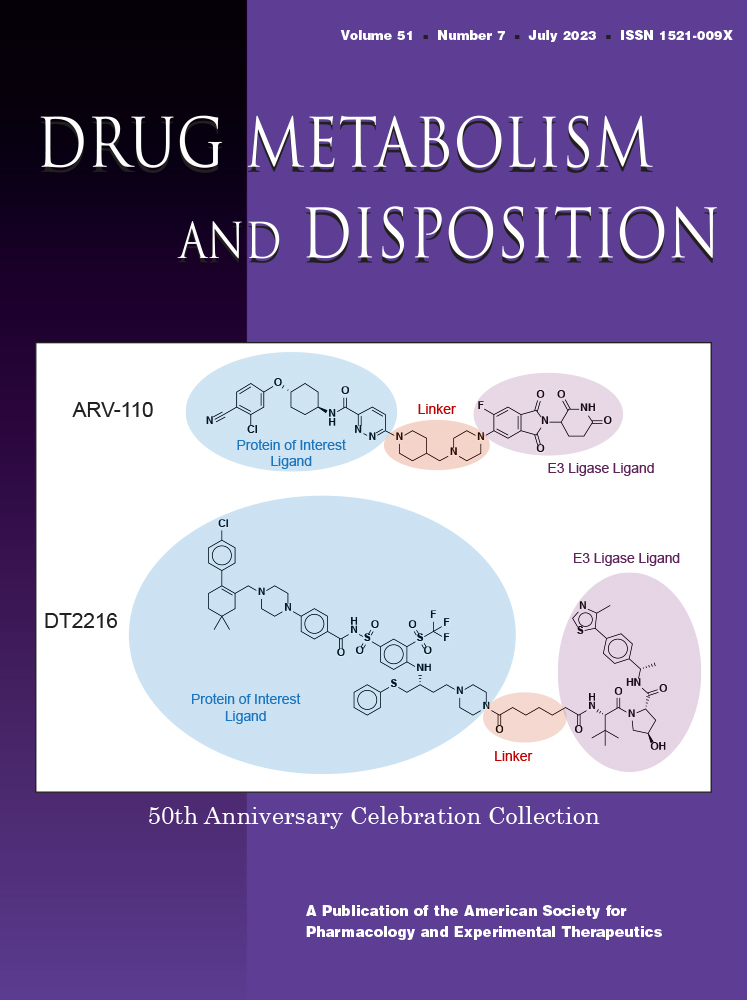 The July issue included an elaborate survey from industrial companies across the United States and Europe on the techniques and practices used to characterize and optimize targeted protein degrader (TPD) ADME-PK. These companies included Janssen, Merck, Amgen, Novartis, Abbvie, Astrazeneca, Roche, Genentech, Takeda among others.
The July issue included an elaborate survey from industrial companies across the United States and Europe on the techniques and practices used to characterize and optimize targeted protein degrader (TPD) ADME-PK. These companies included Janssen, Merck, Amgen, Novartis, Abbvie, Astrazeneca, Roche, Genentech, Takeda among others.
The article entitled “Industry Perspective on the Pharmacokinetic and Absorption, Distribution, Metabolism, and Excretion Characterization of Heterobifunctional Protein Degraders,” highlights the Degrader DMPK/ADME Working Group, developed to regularly assess the growing field, its needs, and determine what modifications were needed to optimize the general workflow for TPD PK/ADME evaluations.
August
Special Section on Perspectives on Drug Metabolism and Disposition, Part II
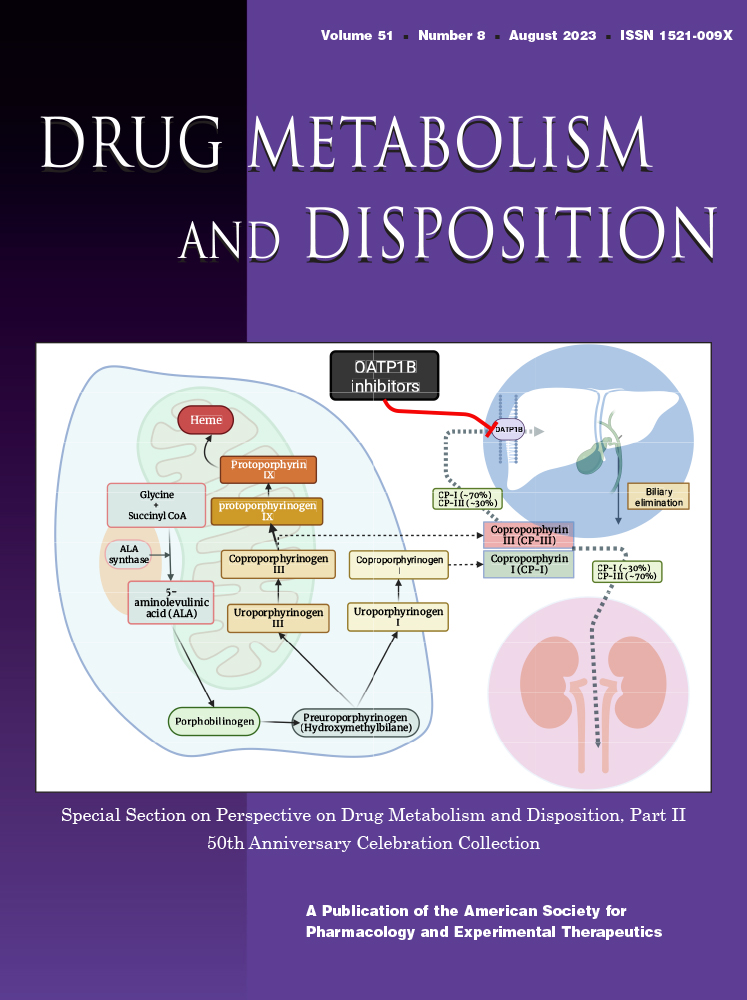


In a review article “Cytochrome P450 and Other Drug-Metabolizing Enzymes as Therapeutic Targets,” author Dr. Robert S Foti from Merck & Co. examined the recent advancements and beneficial clinical impacts marketed drugs have had that target DMEs.
In “Translating Kratom-Drug Interactions: From Bedside to Bench and Back,” Dr. Mary Paine’s team discussed the legal status, chemistry, pharmacology and toxicology of kratom, as well as how kratom and select kratom alkaloids may be modulators of P450 and P-gp activity.
“How CryoEM Has Expanded Our Understanding of Membrane Transporters,” written by Dr. John Schuetz’s team, highlighted the structure, function and transport mechanism of ATP-binding cassette and solute carrier transporters related to several diseases and multidrug resistance.
In the minireview “The Role of Coproporphyrins as Endogenous Biomarkers for Organic Anion Transporting Polypeptide 1B Inhibition—Progress from 2016 to 2023,” Dr. Yurong Lai from Gilead Sciences discusses the utility of reported endogenous biomarkers to detect OATP1B inhibition and proposes a decision tree to preclude the need for a dedicated DDI study where a probe substrate drug is administered to human subjects.
September
Special Section on Mechanism-Based Predictive Methods and Drug Discovery and Development
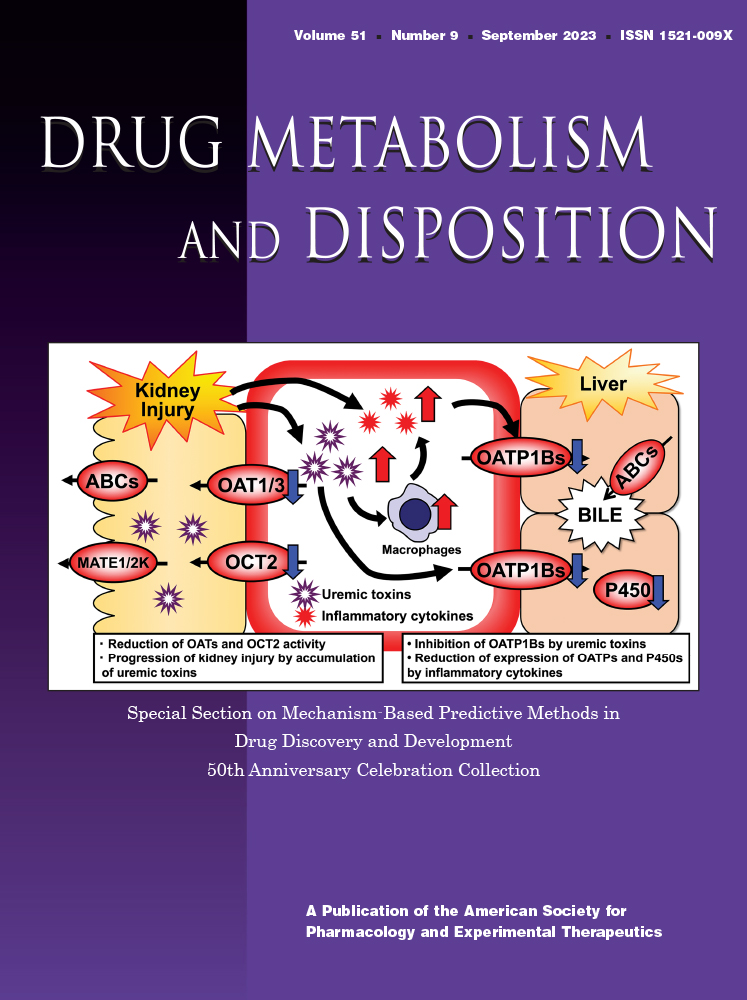


Included in September is a review by Dr. Sugiyama himself on the extended clearance concept and application of Cluster Gauss-Newton method-based analyses, entitled “A 20-year Research Overview: Quantitative Prediction of Hepatic Clearance Using the In vitro-In vivo Extrapolation Approach Based on PBPK Modeling and Extended Clearance Concept.”
Dr. Sugiyama also provided DMD with some of his latest work on PBPK modeling in his and Dr. Wooin Lee’s article “Predicting In vivo Target Occupancy (TO) Profiles via PBPK-TO Modeling of Warfarin Pharmacokinetics in Blood: Importance of Low Dose Data and Prediction of Stereoselective Target Interactions.”
Other contributions to this month’s special celebration collection include six additional articles written by his former students, including Dr. Nozaki, Dr. Kusuhara, Dr. Chu, Dr. Kato, Dr. Maeda, and Dr. Ito.
October
Special Section on New and Emerging Areas and Technologies in Drug Metabolism and Disposition, Part I
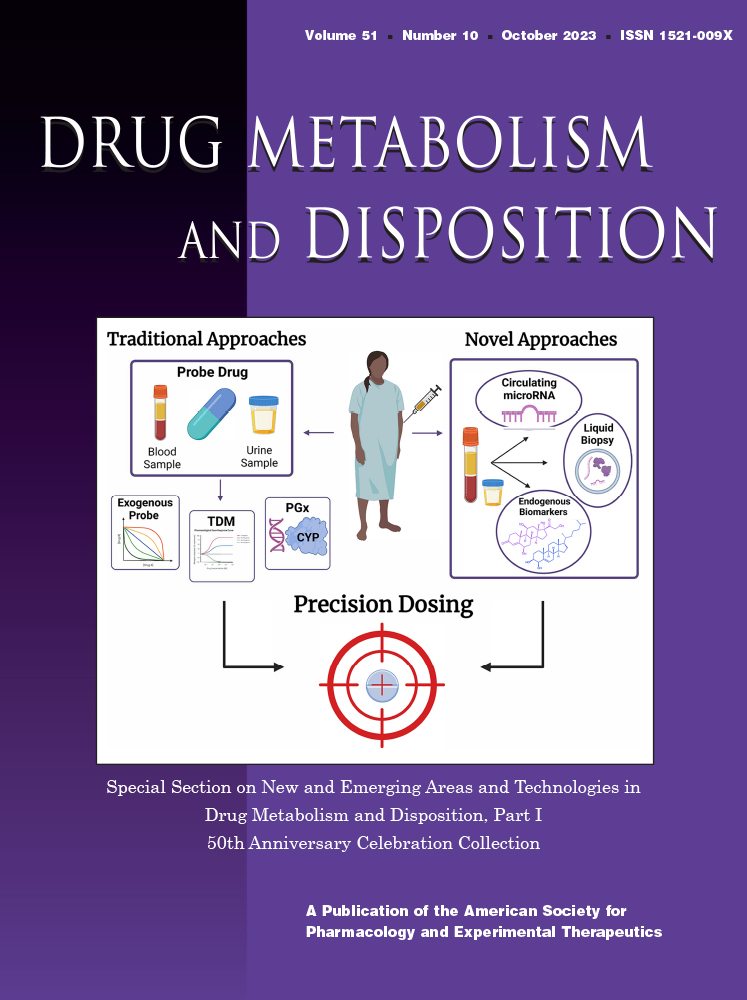


Dr. Donglu Zhang, who has served on the Editorial Advisory Board for almost 15 years, provided a prime example of the different metabolic capacities of humans versus rodents in his research article, “Identification of a Discrete Diglucuronide of GDC-0810 in Human Plasma after Oral Administration.” This human metabolite of GDC-0810 is absent in rats and stems from unique human expression patterns of UDP-glucuronosyltransferase (UGT) isoforms.
In Dr. Micheline Piquette-Miller’s research article, “Use of Traditional and Proteomic Methods in the Assessment of a Preclinical Model of Preeclampsia,” she identified similarities between an immunologic rat model and human characteristics of preeclampsia, validating the use of this model to more confidently study ADME properties of drugs under these conditions.
In Dr. Klarissa Jackson’s review titled “Novel Approaches to Characterize Individual Drug Metabolism and Advance Precision Medicine,” she discussed recent advancement in methodologies to characterize individual drug metabolism phenotypes in clinical settings. Other exciting preclinical models are being developed to study newer classes of drugs, including antibody-drug conjugates.
Dr. Jingkai Gu’s review article “Bioanalytical Assays for Pharmacokinetic and Biodistribution of Antibody-Drug Conjugates,” provided invaluable information on the advantages, disadvantages, and challenges of the recently developed assays and potential areas of improvement.
In “Recent Advances in Mass Spectrometry-Based Spatially Resolved Molecular Imaging of Drug Disposition and Metabolomics,” Dr. Jiang Zheng overviewed the advantages and disadvantages of MALDI-MS, SI-MS, DESI-MS, LAESI-MS, and LA-ICP-MS for their applications for the drug metabolism and disposition applications, which can help future researchers decide on which instrumentation is best for their proposed studies.
In “Fluorescence-Based High-Throughput Assays for Investigating Cytochrome P450 Enzyme-Mediated Drug-Drug Interactions,” Dr. Guangbo Ge discussed some of the difficulties in developing optical probes to detect individual P450 activity, as well as provides optimization suggestions and future perspectives related to the field.
In Dr. Miki Nakajima’s work entitled “NEATA1_2 and DAZAP1, Paraspeckle Components, Interact with PXR to Negatively Regulate CYP3A4 Induction,” it is illustrated for the first time that paraspeckles formed by liquid-liquid phase separation affect PXR-mediated induction of CYP3A4 expression.
In her review article, “Challenges and Opportunities in P450 Research on the Eye,” Dr. Irina Pikuleva provided extensive detail on ocular localizations of P450 enzymes and available eye-relevant P450 information and drug delivery challenges. She has done extensive work in the past elucidating the structures of P450 enzymes to better understand their function-activity relationship.
In the review article, “The Important Role of Transporter Structures in Drug Disposition, Efficacy, and Toxicity,” Dr. Su Zeng and his collaborator Dr. Feng Zhu discussed ATP-binding cassette and solute carrier transporters’ structures based on the current number of high-resolution experimental structures and also describe the application of computational methods in transporter structure prediction.
November
Metabolism and Excretion of Therapeutic Peptides
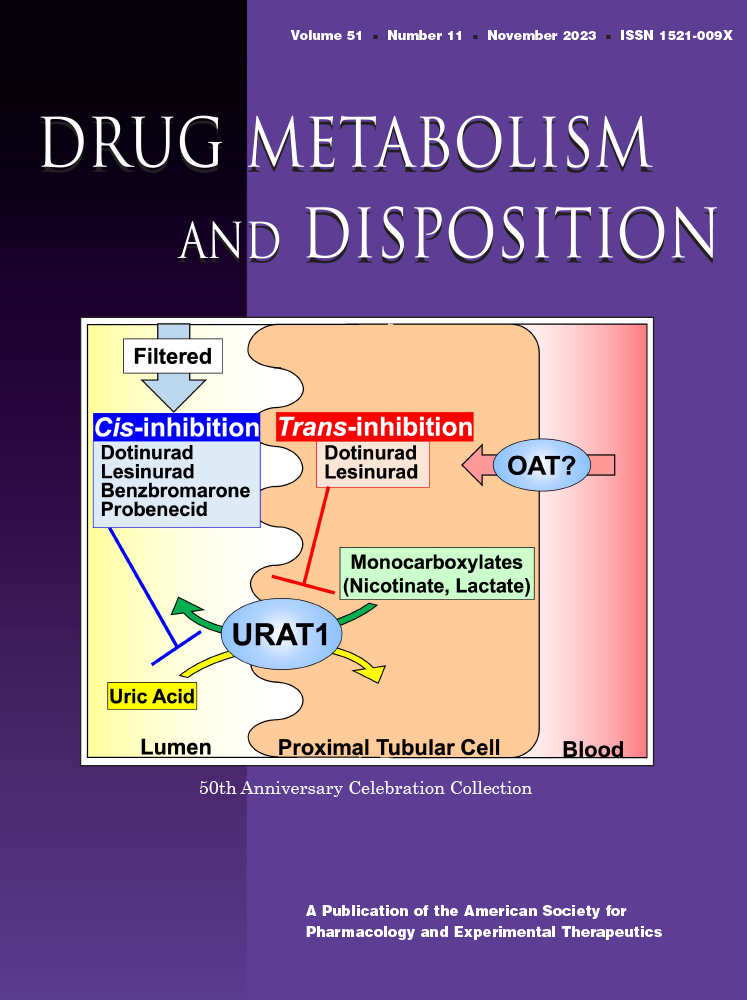


From their Innovation and Quality industry survey, coupled with approved therapeutic peptide submission documents from the U.S. Food and Drug Administration and the European Medicines Agency, the group provided a comprehensive compilation of the differing and varying study practices, exemplifying the lack of distinct regulatory guidelines for the industry on conducting ADME studies for therapeutic peptides.
December
Inclusion and Innovations in Characterizing Drug Metabolism and Disposition Activity in Specific Populations
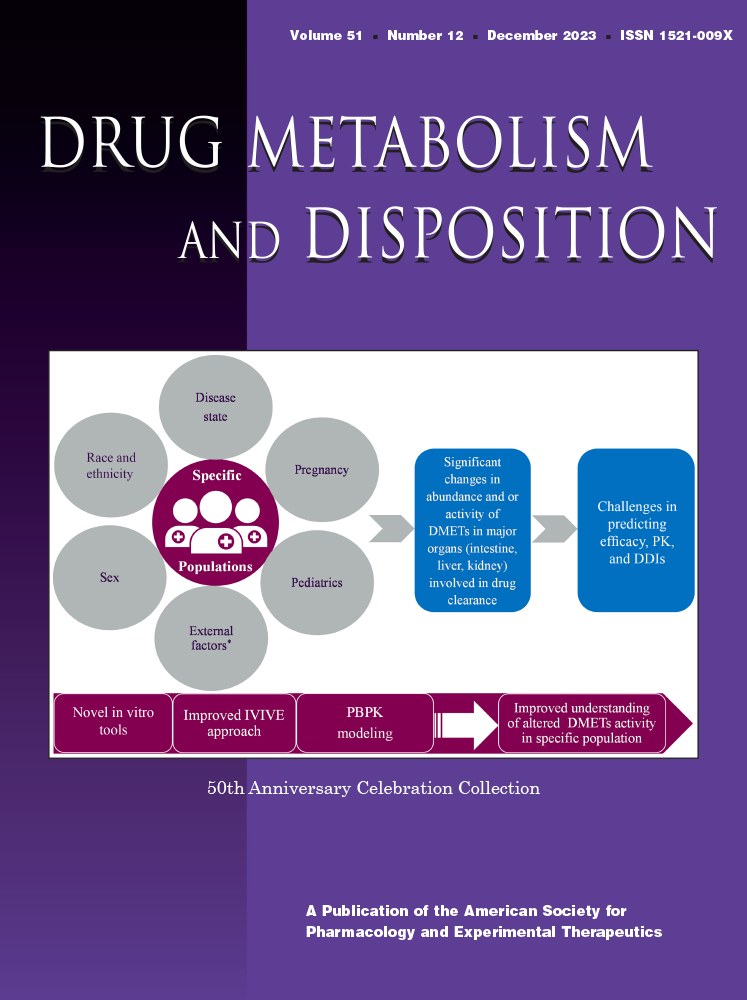


In the celebration collection piece entitled “The African Liver Tissue Biorepository Consortium: Capacitating Population-Appropriate Drug Metabolism, Pharmacokinetics, and Pharmacogenetics Research in Drug Discovery and Development,” Dr. Collen Masimirembwa and collaborators discussed their establishment of the first liver tissue biorepository inclusive of people of African origin. Through this collection, the group discovered gene variants unique to African populations, including CYP2C9*5 and *8. The consortium is a significant milestone to improve the DMPK in non-European people and will aid in the drug discovery and development research community by the inclusion and diversity of samples studied.
The Future of the Drug Metabolism and Disposition Field
As in the past, the drug metabolism and disposition field will face challenges in the future. However, it is always the people who rise to challenges that find solutions. The next generation of researchers stand on the shoulders of past accomplishments and are contributing fresh perspectives and transformative, timely ideas to tackle new scientific questions and challenges.
For future generations, it will be mandatory to expand collaborations and use an interdisciplinary approach to tackle these challenges. Current trainees in the drug metabolism and disposition field agree that there is a need to expand collaborations between academia and industry and to further join forces to emphasize the translational impact of our research.
Over the last 50 years, we have witnessed the successes of the drug metabolism and disposition field, which is closely intertwined with our DMD journal. In 100 years, we will celebrate another 50 years of accomplishments that we will witness firsthand by training future scientific leaders, whose accomplishments in turn, we will have another opportunity to celebrate.
The authors thank Colten Eberhardt and Dr. Dilip Singh for their help with this article.
Authors
-


Simone Brixius-Anderko, PhD, is an Assistant Professor at the University of Pittsburgh School of Pharmacy. She currently serves as the Communications Officer for the ASPET Division for Drug Metabolism and Disposition.
View all posts -


Hannah Work is a PhD candidate at the University of Colorado Anschutz Medical Campus, where she is also a graduate student researcher. She currently serves as a Junior Communications Officer for the ASPET Division for Drug Metabolism and Disposition.
View all posts

